Mapping the Amazon Customer Journey: Insights and Strategies
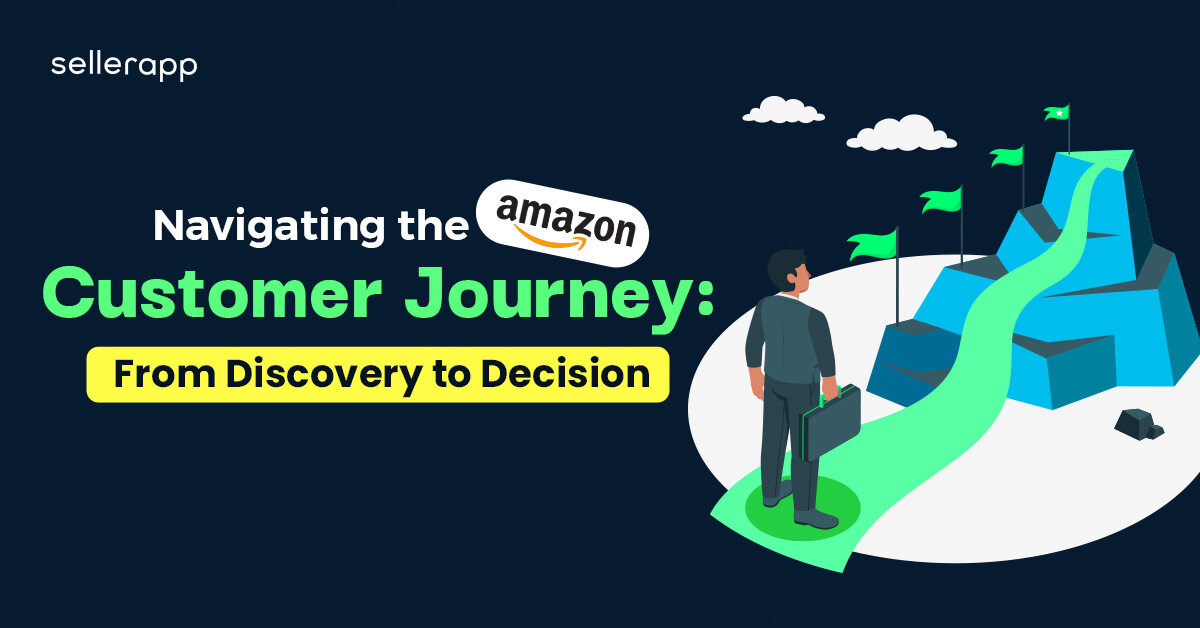
You should embrace a customer-centered approach to succeed in the business world – Not just by paying attention to the customers but by becoming truly obsessed with their needs.
In today’s rapidly evolving digital landscape, the concept of customer journey has taken unprecedented significance. The brand aims to offer loyalty and memorable experiences for its customers.
Among these e-commerce giants, Amazon stands as an example of customer-centricity, redefining how millions traverse the realm of online shopping.
In this article, we uncover the pivotal stages that shape your customer journey on Amazon from customer engagement and satisfaction to loyalty.
Quick Guide
- How the customer journey on Amazon works
- What is an Amazon customer journey map?
- Why is Amazon customer journey mapping important?
- Five stages of the Amazon customer journey
- How to create a customer journey map
- Conclusion
How the customer journey on Amazon works
The Amazon customer journey refers to the series of interactions, experiences, and stages that a shopper goes through while engaging with the Amazon platform and products. It consists of the entire process, from the initial awareness of a product to the post-purchase engagement and beyond.
This journey is not just limited to the transaction itself; it also includes various touchpoints and interactions that shape the customer’s perception and overall experience with your brand or similar competitors.
What is an Amazon customer journey map?
An Amazon customer journey map is a visual depiction of a customer’s entire process when engaging with the brand and its products.
It offers a clear, step-by-step illustration of the customer’s experience from the initial awareness of products or services to the final stages of post-purchase interaction. This map highlights various touchpoints, emotions, actions, and decisions that customers make along the way.
By mapping out each stage of the journey, you can gain insights into how customers interact with your brand.
The goal here is to create a more seamless, personalized, and satisfying journey for customers, ultimately leading to increased customer loyalty, positive reviews, and repeat business. The customer journey map is a valuable tool for refining strategies, optimizing processes, and aligning efforts to effectively meet customer expectations.
Why is Amazon customer journey mapping important for you?
Customer journey mapping is crucial because it offers insights into a customer’s entire experience when interacting with your products. Specifically, customer journey mapping holds significant importance due to the following reasons:
Understanding Customer Needs:
Mapping the customer journey helps you to gain a deep understanding of customer needs and preferences. This understanding is essential for tailoring products, services, and experiences to match customer expectations effectively.
Identifying Pain Points:
By visualizing the entire journey, you can identify any bottlenecks, frustrations, or obstacles customers might encounter. This information addresses customer pain points and improves the overall experience.
Optimizing User Experience:
Customer journey mapping highlights touchpoints where customers interact with your products, Amazon marketplace, customer service, and more. This insight helps you to optimize customer touchpoints to provide a seamless and user-friendly experience, leading to higher customer satisfaction and loyalty. This, in turn, increases your Customer Lifetime Value (CLV).
Personalization and Recommendations:
Mapping the journey allows you to understand the type of products that customers are interested in. You can use tools provided by Amazon like ABA (Amazon Brand Analytics) and advertising reports to derive insights to target your audience through ads and increase your sales further.
If you need help analyzing Amazon advertising reports, check out this article.
Full funnel optimization:
By mapping the customer journey, you can identify the most effective communication channels for different stages of the marketing funnel. This could include email updates through the brand website, push notifications, or social media engagement, running Amazon DSP ads, and ensuring customers are informed and engaged at the right moments. Targeting all aspects of the funnel helps you maximize your advertising efforts and increase your brand reach.
Recommended guide: How to optimize ads with AMC and Amazon Ad Server?
Building Loyalty and Advocacy:
A positive customer journey fosters customer loyalty and advocacy. Satisfied customers are more likely to become repeat buyers and will recommend you to others, positively impacting the brand’s reputation and revenue.
Innovation and Differentiation:
It can uncover opportunities for innovation and differentiation. You can identify unmet needs or areas where your competitors might fall short and create unique features or products to stand out.
Continuous Improvement:
The customer journey is not static; it evolves with changing customer behaviors, technologies, and market trends. Regularly revisiting the journey map enables you to adapt and improve your strategies to stay ahead.
Thus, Amazon customer journey mapping empowers you to deliver a more tailored, seamless, and delightful experience to your customers. It drives improvements across various facets of the business, ultimately leading to increased customer satisfaction, loyalty, and business growth.
What are the five stages of the customer journey?
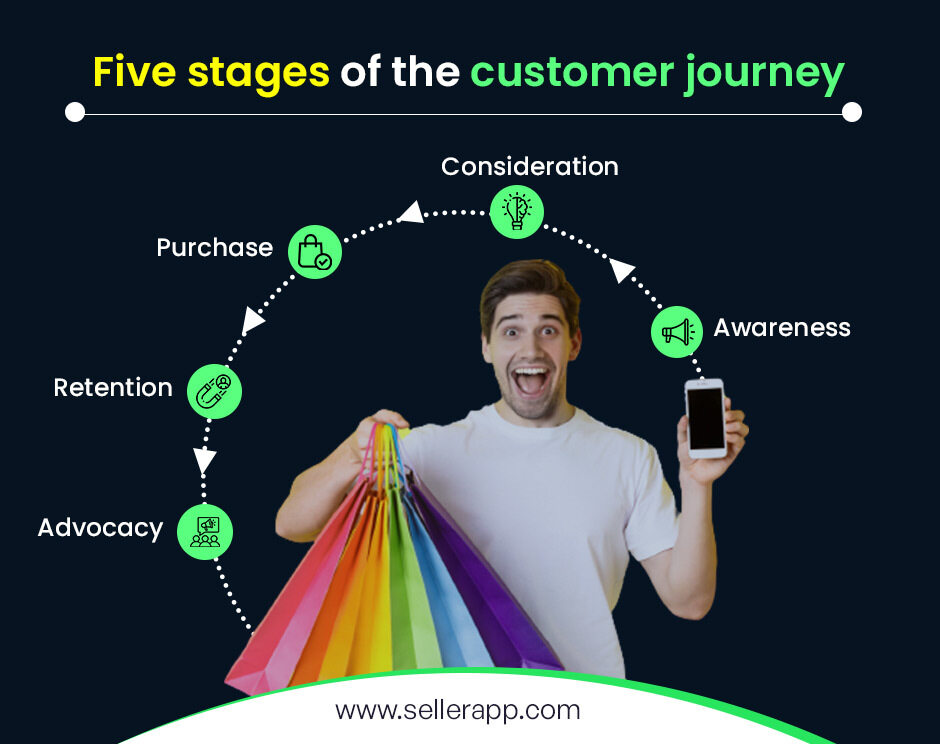
The customer journey consists of five distinct stages each with its unique benefits. These stages help businesses understand and map out the customer’s experience from initial awareness to becoming a loyal advocate.
Here’s an explanation of each stage:
Awareness
The awareness stage is the beginning of the customer journey. At this point, potential customers become aware of a brand, product, or service. This awareness can happen through various channels, such as advertising, social media, word of mouth, or online searches. The goal in this stage is to capture the attention of the target audience and make them interested in learning more about what the business has to offer.
Consideration
In the consideration stage, customers are actively researching and evaluating different options. They are comparing products or services, read reviews, and seeking more detailed information. This is a crucial stage for businesses to provide informative content, showcase the unique value of their offerings, and address any questions or concerns potential customers may have. The goal is to move customers from considering options to favoring the business’s product or solution.
Purchase
The purchase stage is where the customer decides to buy your product. They’ve researched and compared options and are now ready to complete the transaction. This could involve placing an order online, making an in-store purchase, or subscribing to a service. The purchasing process should be smooth, user-friendly, and secure to ensure a positive experience. Businesses should also consider offering discounts or special offers to encourage conversion.
Retention
Once a customer has made a purchase, the focus shifts to the retention stage. This stage is all about ensuring that customers are satisfied with their purchase and have a positive experience post-purchase. Providing excellent customer support, delivering a high-quality product or service, and maintaining ongoing communication are essential in this phase. Building a strong relationship with customers increases the likelihood of repeat purchases and long-term loyalty.
Advocacy
The advocacy stage is the pinnacle of the customer journey. Satisfied and loyal customers become advocates for the brand, sharing their positive experiences with others. They might leave glowing reviews, refer friends and family, and actively engage with the brand on social media or other platforms. Word-of-mouth recommendations from advocates carry significant influence and can bring in new customers. Businesses can nurture advocacy by continuing to provide exceptional experiences and rewards for loyal customers.
Understanding these five stages of the customer journey helps you to tailor your marketing, communication, and engagement strategies to meet customer needs at each step. By providing a seamless and positive experience throughout the journey, businesses can enhance customer satisfaction and ultimately drive growth.
How to create a customer journey map
To create a comprehensive customer journey map, follow these steps:
Step 1: Define Customer Touchpoints
Identify the touchpoints where customers interact with your brand. These could include interactions on your website, social media, emails, advertisements, or in-person interactions. These touchpoints will serve as the key moments in your customer journey.
Step 2: Conduct Market Research
Engage in user studies and surveys to gather insights directly from your customers. Understand how they discover your brand, what pain points they encounter, and where they interact with your offerings. This input will help refine your journey map.
Step 3: Develop Buyer Personas
Create detailed buyer personas that represent your target audience. Understand their demographics, preferences, and behaviors.
You can answer questions like:
- What’s their age?
- What are their interests?
- How do they communicate?
- What are their challenges?
These questions will help you tailor the journey map to the specific needs and expectations of different customer segments.
Step 4: Set Clear Goals
Establish clear goals for each touchpoint in the customer journey. Determine whether you’re aiming to increase brand awareness, drive sales, or enhance customer loyalty. Set a specific action plan that aligns with these goals to create a cohesive experience.
Let’s say that increasing brand awareness is your business goal. You should list the strategies that help you increase your brand reach. They could be running Sponsored brand ads, targeting competitor products, increasing social media presence, or collaborating with an influencer in the space.
Step 5: Analyze and Refine
Analyze the data collected and identify pain points, areas of improvement, and opportunities for enhancing the customer experience. Consider feedback from customer support teams to address recurring issues. Use this analysis to refine your journey map.
Step 6: Incorporate Updates
As your business evolves and shoppers’ preferences change, update your customer journey map accordingly. Regularly revisit and adjust your map to ensure it remains accurate and aligned with your brand’s goals.
These steps will let you create a customer journey map that provides a holistic view of the customer experience. Streamline your efforts to deliver a seamless and satisfying journey for your customers, and increase their satisfaction and loyalty, thereby, business growth.
Conclusion
The customer journey mapping on Amazon is not just about selling products; it’s about fostering relationships, anticipating needs, and delivering beyond expectations. This journey map reflects a dynamic ecosystem where convenience, personalization, and innovation converge to shape an unparalleled online shopping experience.
Do you need help in mapping your customer journey and creating a full-funnel advertising strategy? Let SellerApp help. Our team has helped 20,000+ brands like yours to strategize and execute advertising campaigns.
If you have further doubts, schedule a call with us, and our experts will get back to you!
Happy Selling!
Additional read:
How does Amazon Marketing Cloud work?
What Is the RMA Number on Amazon?
7 Tips for Better Amazon Copywriting



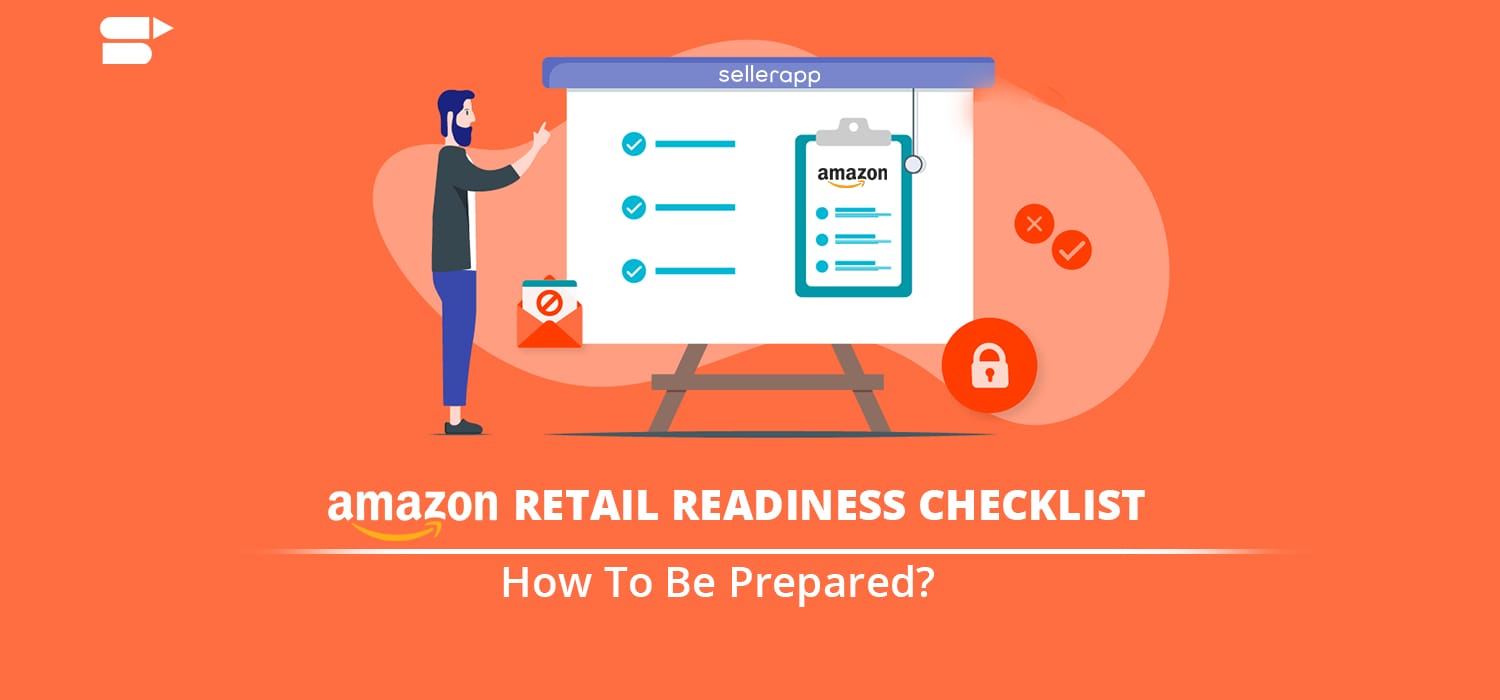
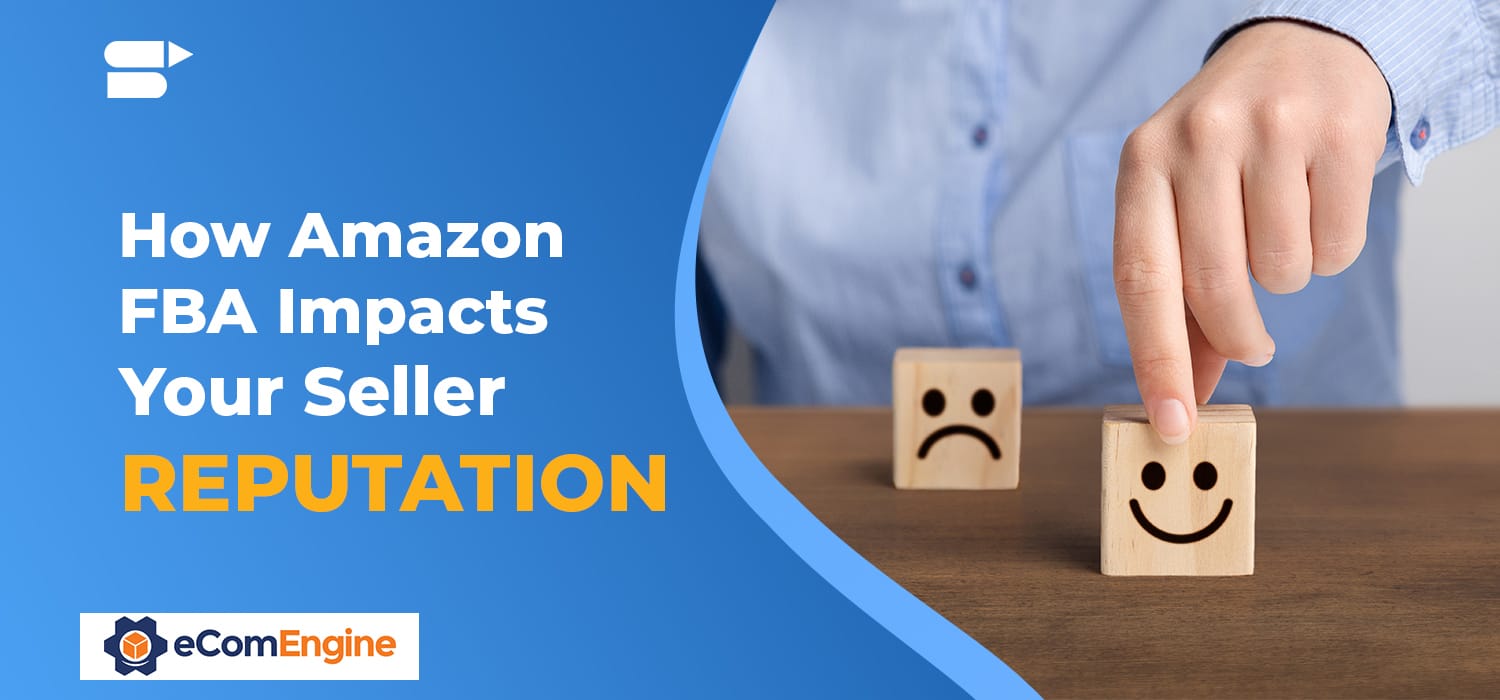
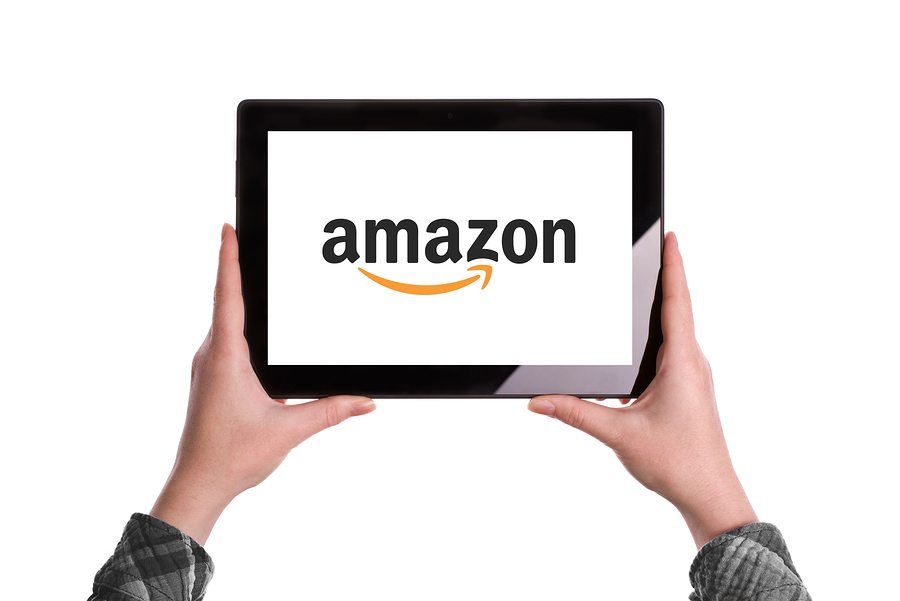


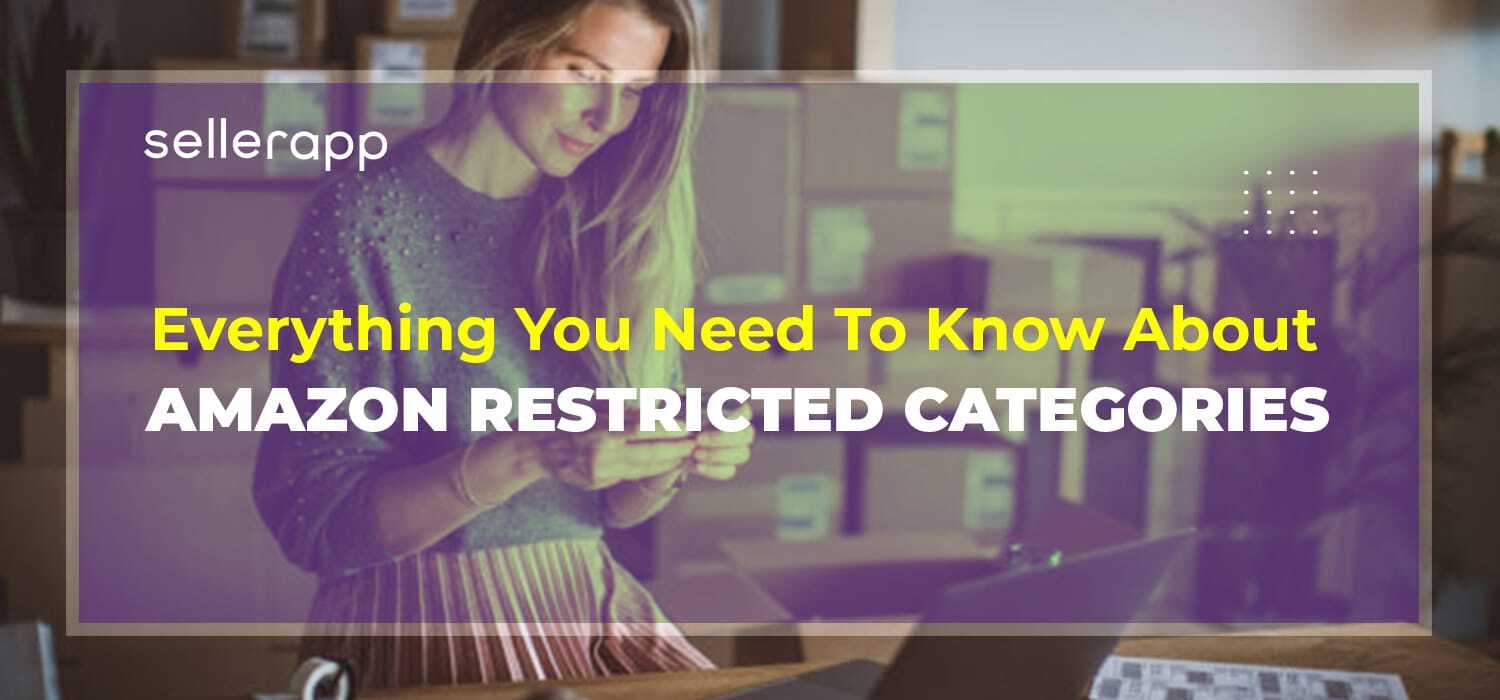

Kathleen Jones
September 13, 2023Spot-on analysis, as usual. Keep shining!
Clare Thomas
March 12, 2024Thank you.
Betty Stark
October 31, 2023Short read, big impact. I love it!
Clare Thomas
March 12, 2024Very happy to hear that.